What's New
Displaying results 2341 - 2350 of 4052
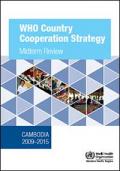
Resource | Publications,
This document presents a midterm review of the WHO Country Cooperation Strategy (CCS) 2009–2015 for Cambodia. Since the CCS was drafted, the development context in Cambodia has changed markedly – and the country now faces new challenges associated with economic and social transition.
The WHO Country Cooperation Strategy (CCS) for Cambodia was drafted in 2008 to cover 2009–2015. Since then, Cambodia and its health sector have developed rapidly. The economy is growing steadily, with the country due to attain middle-income status in the next few years; poverty is falling; and urbanization is well under way. The health sector is also maturing and now faces a new set of challenges associated with economic and social transition: changing disease patterns and in particular the emergence of noncommunicable diseases (NCDs); a growing private sector active in the health market; and the challenge of ensuring quality as coverage expands.
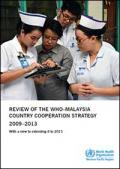
Resource | Reviews and Snapshots,
In Malaysia, the key national planning process leads to the development of five-year national development plans, with the current 10th Malaysia Plan (10th MP) covering 2011–2015 and the 11th MP set to span 2016–2020.
As a result, the recent WHO–Malaysia Country Cooperation Strategy 2009–2013 was not aligned with the time frame of Malaysia’s primary development planning cycle. This is problematic as the country’s five-year planning cycle includes extensive consultations and processes that identify key national and sectoral priorities for the coming period. If the next CCS had been developed to cover 2014–2018, it would have continued to be out of step with this important national planning process.
This review, therefore, was undertaken with a view to considering the suitability of extending the framework described in the 2009–2013 CCS to also cover 2014–2015. This would then enable the next full CCS to cover 2016–2020, which would synchronize with the 11th MP.
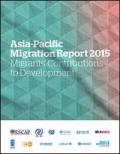
Resource | Publications,
The people of Asia and the Pacific are on the move. Migrants from countries across the region play a key role as development actors, helping drive GDP growth in their countries of destination, while supporting families and even communities in their countries of origin. The benefits of migration, however, remain under-acknowledged. Too often, prejudice against migration and unilateral approaches guide responses to migration challenges, rather than evidence-based and cooperative ones.
The Asia-Pacific Migration Report 2015: Migrants' Contributions to Development, produced by the Asia-Pacific Regional Thematic Working Group on International Migration, including Human Trafficking, provides an insight into how labour migration, the dominant migration trend in the Asia-Pacific region, can contribute to development in countries of origin and destination in the Asia-Pacific region.
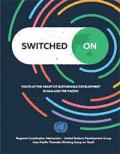
Resource | Publications,
Investing in youth is an investment in our future. It is also fundamental for the successful implementation of the global 2030 Agenda for Sustainable Development and the Sustainable Development Goals (SDGs). This is especially true in the Asia-Pacific region, which is home to about 700 million youth, whose ambitions and abilities can make a substantial contribution to the realization of the prosperous, peaceful and sustainable future we want for all people in our region.
This report was produced for three main reasons: First and foremost to raise awareness of the importance of youth-related, evidence-based and strategic participatory policy-making, planning and programming. Second, to highlight the current status, challenges and opportunities for the youth of Asia and the Pacific. Third, to support the understanding and practical responses — by governments, civil society, the private sector, academia and other stakeholders — of the position and promise of youth in the region.
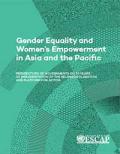
Resource | Publications,
Gender equality and women’s empowerment are fundamental human rights issues and cornerstones of sustainable and equitable development. For the last 20 years, the Beijing Declaration and Platform for Action have guided the realization of these essential elements of the future we want.
In recognition of the significance of gender equality, especially for the new global development agenda, the United Nations Economic and Social Commission for Asia and the Pacific (ESCAP), in cooperation with the United Nations Entity for Gender Equality and the Empowerment of Women (UN Women), conducted a study of the perspectives of Governments in the Asia-Pacific region with respect to progress in implementation of the Beijing Declaration and Platform for Action.
This report is the result of the analytical review, outlining the perspectives of ESCAP members and associate members with respect to progress towards, and fundamental requirements for, the realization of gender equality and women’s empowerment in Asia and the Pacific.
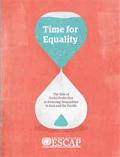
Resource | Publications,
The report provides evidence that social protection is an effective instrument to reduce inequalities, and by so doing, contributes to the integration of the economic, social and environmental dimensions of sustainable development.
It examines in particular the inequalities faced by children, persons of working-age, older persons and in relation to access to affordable health care and related social protection initiatives taken in the region. It notes that while countries in the region are increasingly recognizing the importance of social protection, important coverage gaps remain. It also includes examples of successful schemes and provides member States and other stakeholders with recommendations along eight broad and complementary approaches.
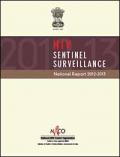
Resource | Publications,
India has one of the world’s largest and most robust HIV sentinel surveillance (HSS) systems. Since 1998 it has helped the national government to monitor the trends, levels, and burden of HIV among different population groups and develop effective control measures. The HSS is implemented across the country with support from two national institutes and six regional public health institutes.
The 13th round of HSS was implemented during 2012-13 at 750 antenatal clinics (ANC) surveillance sites, covering 556 districts across 34 states and union territories (UTs) in the country. The methodology adopted during the HSS was consecutive sampling with unlinked anonymous testing. Specimens were tested for HIV following the two-test protocol. However, nine sites could not achieve the minimum required sample size and were excluded. A total of 2,94,732 ANC samples collected and tested from the 741 valid sites have been considered for the analysis in this report.
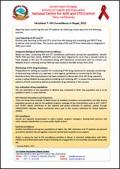
Resource | Fact Sheets,
Nepal has been conducting HIV and STI surveillance particularly among key populations, namely: PWID, FSW and their clients, MSM/TG, and male labor migrants for more than a decade mainly to track changes in HIV and STI prevalence along with behavioral components such as condom use. Hepatitis-B and C screening among PWID has been started in the IBBS surveys from 2015.
The size estimation of key population in districts was conducted in 2010. The population size is to be updated in every 2-3 years interval.
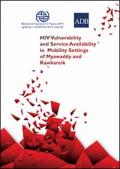
Resource | Publications,
The relationship between HIV and mobility is widely recognized. While mobility and migration are not risk factors for HIV by themselves, the often harsh, unsafe and isolated conditions surrounding the mobility process can give rise to behaviours strongly associated with increased vulnerability to HIV, while also posing barriers to access to HIV prevention, treatment and care. The dynamics of population movement have evolved in South-East Asia over the last decade, and are in a phase of acceleration due to multiple factors including geopolitical and socio-economic changes, infrastructure development and closer cooperation among ASEAN Member Countries. Whether mobility is internal or cross-border, whether it is voluntary or forced, this increasing population movement generates particular conditions and circumstances that render migrants vulnerable and at risk of HIV infection.
The aim of this study was to assess HIV vulnerabilities and access to HIV health-care services among key affected populations that live or work along the East-West Economic Corridor between Myawaddy and Kawkareik in Kayin State, Myanmar, as well the impact of economic development and increased interconnectivity on these factors.
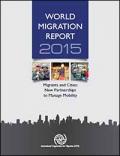
Resource | Publications,
The World Migration Report 2015: Migrants and Cities, New Partnerships to Manage Mobility ─the eighth report in IOM’s World Migration Report (WMR) series─ focuses on migrants and how migration is shaping cities and the situation of migrants in cities.
While much of the current international discussion about migration trends and migration policy tends to focus on the national level, this report takes migration enquiries to the city level and aims to raise understanding of the local socioeconomic dynamics of migration and the close connection between migration and urban development.





